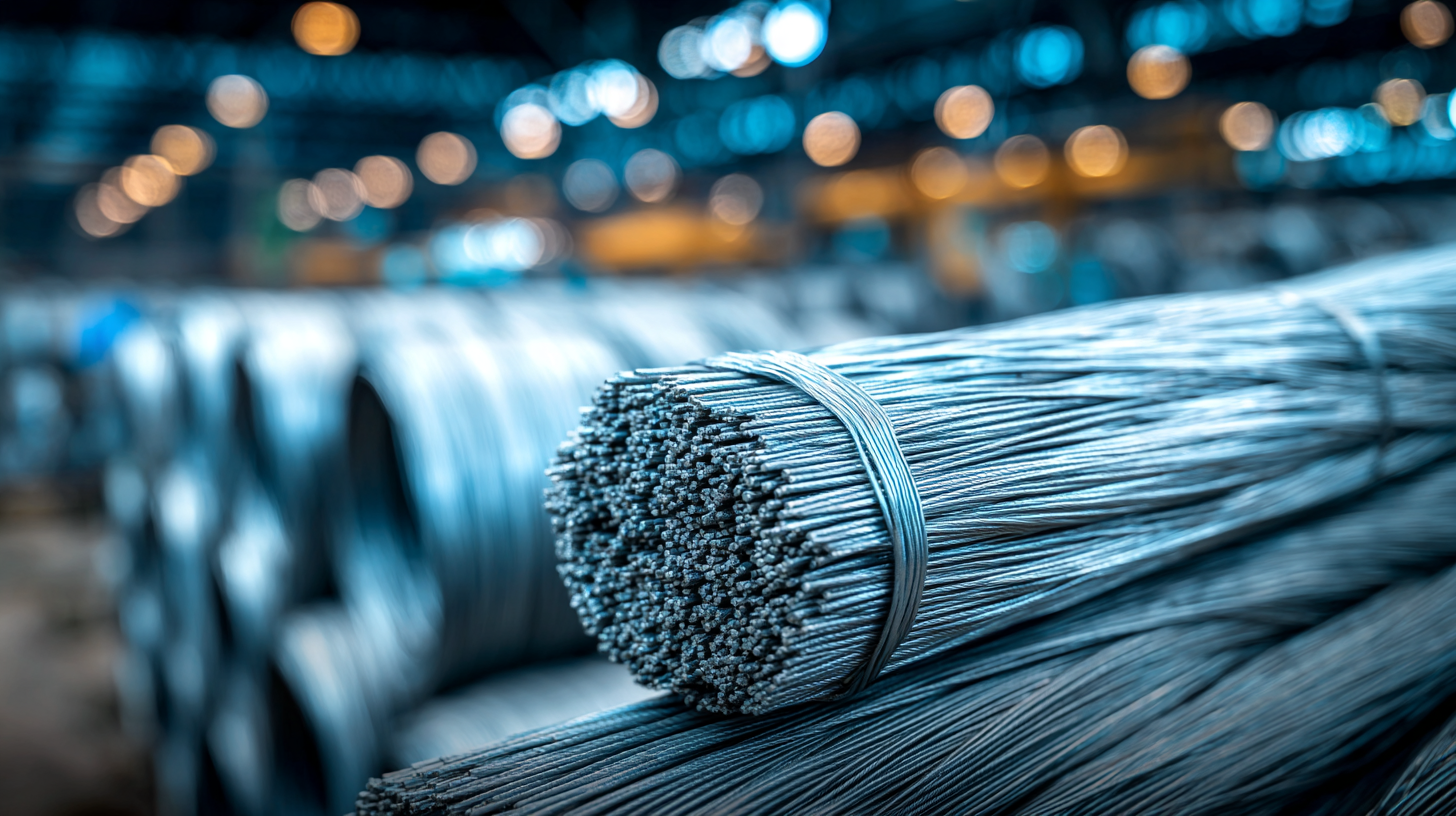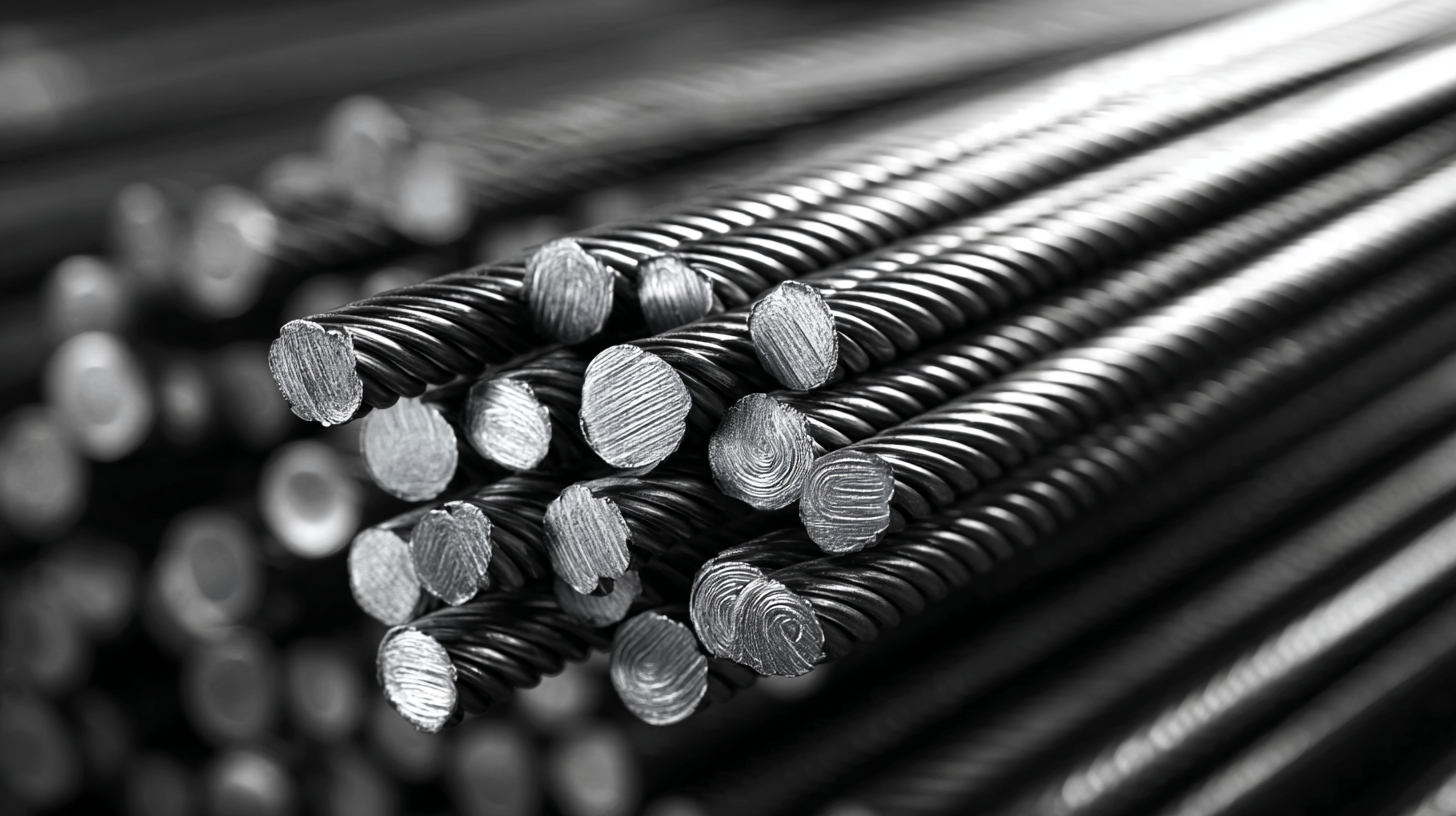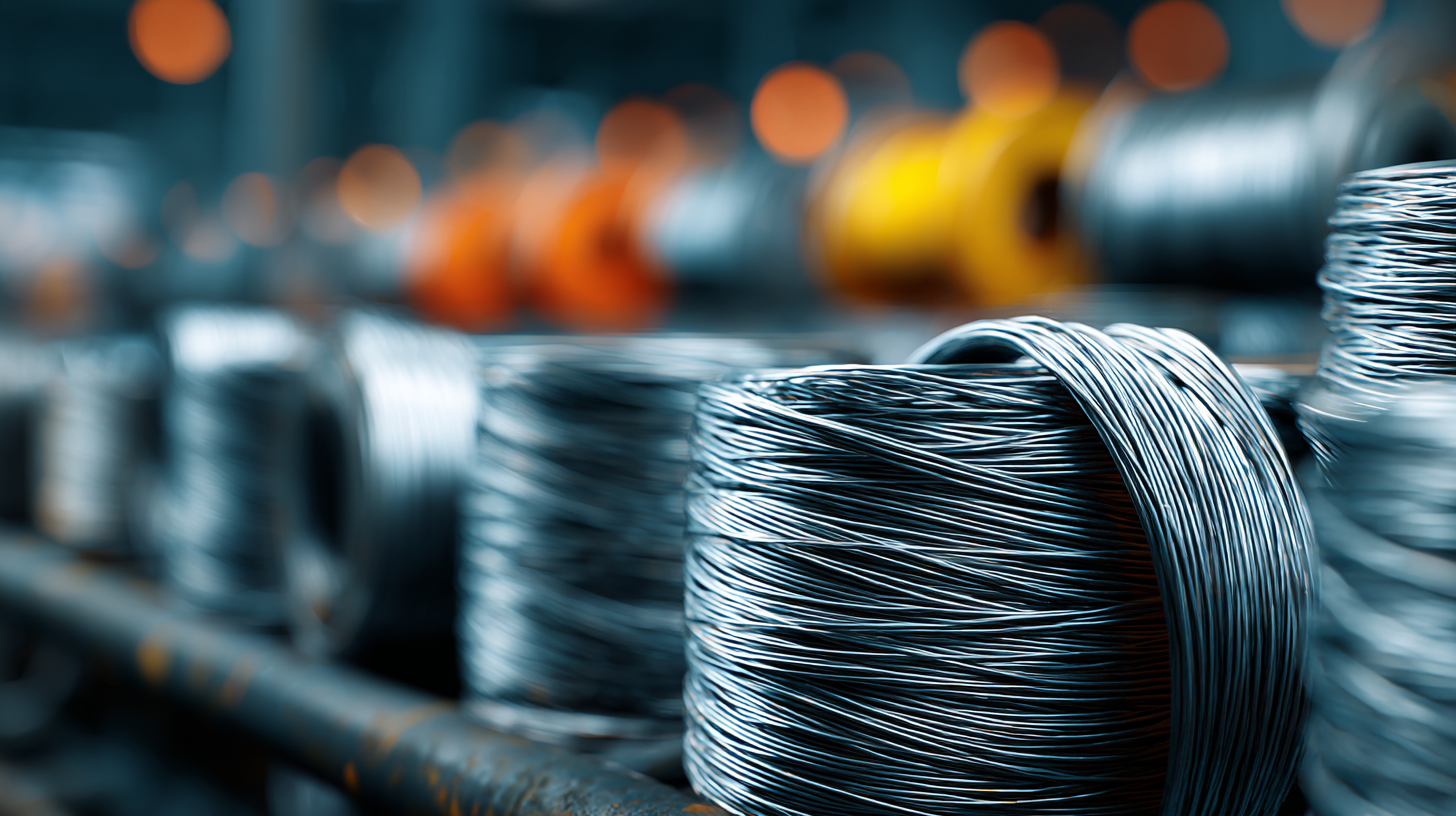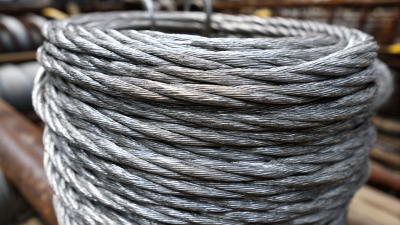
-
Home
-
Products
-
PVC Cable Material
-
Low Smoke Zero Halogen Cable Material
-
Cable material
-
Optical fiber cable
-
-
About Us
-
VR
-
News
-
Blog
-
Contact Us
Leave Your Message

 Phosphating Steel Wire has emerged as a vital process in modern industrial applications, offering a range of benefits that enhance both performance and sustainability. This treatment, which involves the application of a phosphate coating to steel wire, significantly improves its corrosion resistance and wear properties. According to a report by the International Association of Metallurgical Engineers, the global market for phosphated steel is projected to reach USD 2.5 billion by 2025, driven by the increasing demand in automotive, aerospace, and construction sectors. As industries strive to meet stringent regulations on durability and sustainability, the importance of phosphating processes becomes increasingly evident.
Phosphating Steel Wire has emerged as a vital process in modern industrial applications, offering a range of benefits that enhance both performance and sustainability. This treatment, which involves the application of a phosphate coating to steel wire, significantly improves its corrosion resistance and wear properties. According to a report by the International Association of Metallurgical Engineers, the global market for phosphated steel is projected to reach USD 2.5 billion by 2025, driven by the increasing demand in automotive, aerospace, and construction sectors. As industries strive to meet stringent regulations on durability and sustainability, the importance of phosphating processes becomes increasingly evident.
In addition to corrosion resistance, phosphating also plays a crucial role in promoting the adhesion of paints and coatings, thus enhancing the longevity of products made from steel wire. The benefits of Phosphating Steel Wire extend to various applications, including high-strength cables, springs, and fasteners, which are essential components in machinery and infrastructure. The latest industry analysis highlights that companies utilizing advanced phosphating techniques have reported a reduction in material costs by up to 15%, showcasing the economic advantages of adopting this technology.
Furthermore, as industries focus on reducing their environmental impact, the phosphating process supports eco-friendly practices by minimizing the use of harmful chemicals. The implementation of modern phosphating systems, which often include closed-loop water systems and energy-efficient operations, exemplifies the sector's commitment to sustainability. Overall, the advantages and applications of Phosphating Steel Wire are crucial for enhancing the performance and environmental sustainability of a wide range of industrial products, making it an essential consideration for manufacturers in today's competitive market.
Phosphating is a vital surface treatment process that significantly enhances the corrosion resistance of steel wire. By applying a phosphate coating, the steel wire develops a protective layer that prevents oxidation and reduces the risk of rusting, thereby extending its lifespan in various applications. This treatment is particularly crucial in industries where steel wire is exposed to harsh environmental conditions, such as construction, automotive, and marine sectors. The durability provided by phosphating not only safeguards the wire itself but also contributes to the longevity of the structures or products it is a part of.
The application of phosphated steel wire has seen a surge in demand, with the global steel wire rope market projected to reach USD 13.88 billion by 2030. The corrosion-resistant properties achieved through phosphating enable manufacturers to produce reliable and sustainable products, aligning with the growing focus on innovation and environmental responsibility in modern industries. As businesses continue to adapt to market demands, the benefits of phosphating steel wire will play a crucial role in enhancing product performance and overall operational efficiency.
 Phosphated steel wire has become increasingly important in automotive manufacturing due to its unique properties that enhance performance and longevity. The phosphating process involves treating steel wire with phosphoric acid, which creates a protective phosphate coating. This coating significantly improves corrosion resistance, making the wire ideal for automotive components exposed to harsh environments, such as wiring harnesses and suspension systems. The enhanced durability reduces maintenance costs and extends the lifespan of vehicles.
Phosphated steel wire has become increasingly important in automotive manufacturing due to its unique properties that enhance performance and longevity. The phosphating process involves treating steel wire with phosphoric acid, which creates a protective phosphate coating. This coating significantly improves corrosion resistance, making the wire ideal for automotive components exposed to harsh environments, such as wiring harnesses and suspension systems. The enhanced durability reduces maintenance costs and extends the lifespan of vehicles.
Moreover, the applications of phosphated steel wire extend beyond corrosion resistance. The roughened surface created during the phosphating process promotes better adhesion for coatings and paints, which is crucial in the automotive industry where aesthetics and protective finishes are vital. This improved adhesion prevents peeling and chipping over time, ensuring that vehicles maintain their visual appeal and protective qualities. Additionally, the friction properties of phosphated wire allow for more reliable performance in various mechanical systems, thus optimizing the overall manufacturing process and contributing to more reliable automotive assemblies.
 Phosphating processes play a crucial role in enhancing the
corrosion resistance of steel wire used in various modern industries,
particularly in automotive applications. Techniques such as galvanic coupling during
phosphating have been shown to improve the corrosion resistance of mild steel substrates significantly. This allows manufacturers
to achieve optimal coating performance, which is essential for prolonging the life of automotive components. The ability of
zinc phosphate coatings to offer superior protection when developed under
optimal conditions highlights the effectiveness of surface preparation in mitigating corrosion risks.
Phosphating processes play a crucial role in enhancing the
corrosion resistance of steel wire used in various modern industries,
particularly in automotive applications. Techniques such as galvanic coupling during
phosphating have been shown to improve the corrosion resistance of mild steel substrates significantly. This allows manufacturers
to achieve optimal coating performance, which is essential for prolonging the life of automotive components. The ability of
zinc phosphate coatings to offer superior protection when developed under
optimal conditions highlights the effectiveness of surface preparation in mitigating corrosion risks.
Tips for achieving the best results in phosphating include thoroughly cleaning the substrate to remove any contaminants
before the phosphating process. Additionally, controlling the temperature and concentration of the phosphating solution can
enhance coating uniformity and performance. Employing modified materials, such as potassium titanate whiskers, can further augment the corrosion
resistance of phosphated coatings, making them more effective in harsh environments.
Incorporating these techniques into the manufacturing process not only enhances the performance of steel wire but also
contributes to sustainable practices by reducing the frequency of maintenance and replacement. As industries continue to
seek materials that combine durability with eco-friendliness, phosphating
will remain a vital technique for meeting these needs.
Phosphating, a process of applying a phosphate coating to steel wire, has significant environmental benefits when conducted correctly. This method not only enhances corrosion resistance and improves adhesion for subsequent coatings but also promotes sustainability in industrial practices. By facilitating the longevity of steel components, phosphating reduces the need for frequent replacements, consequently minimizing waste and conserving resources in the manufacturing cycle.
When engaging in phosphating processes, companies can implement sustainable practices to further mitigate their environmental impact. Tips for achieving this include ensuring that the chemicals used in the phosphating solution are non-toxic and biodegradable. Additionally, investing in efficient water recycling systems within the phosphating baths can minimize water usage and reduce the effluent generated during the cleaning and rinsing stages.
Moreover, opting for energy-efficient heating systems can drastically cut down on energy consumption during the phosphating process. Regular maintenance and optimization of equipment are also essential to ensure that the phosphating process operates effectively while adhering to environmental standards. By prioritizing these considerations, industries can take significant strides toward eco-friendly phosphating practices.
This bar chart illustrates the benefits of phosphating steel wire across various industries. The percentage indicates the extent of benefits perceived in sectors such as Automotive, Construction, Electronics, Aerospace, and Manufacturing, highlighting the versatility and adoption of phosphating in modern industrial applications.
Phosphating technology has been a critical component in enhancing the performance of steel wire across various modern industries. Recent advancements indicate that integrating phosphate coatings can significantly improve corrosion resistance and mechanical properties, which are essential for applications in construction, automotive, and manufacturing sectors. According to a report from MarketsandMarkets, the phosphating market is projected to grow from $6.8 billion in 2021 to $9.7 billion by 2026, reflecting the increasing demand for coated steel products that promise enhanced durability and performance.
Innovations in phosphating technology, such as the incorporation of strontium-doped calcium phosphate coatings, have gained attention for their potential applications beyond traditional sectors. A recent study highlighted how this novel approach not only strengthens the bonding of coatings but also adds biocompatibility, making it suitable for orthopedic implants. The dual treatment of phosphate conversion combined with hydrothermal methods demonstrates a significant leap in coating technology, enhancing substrate interaction and performance. As industries continue to seek sustainable and high-performing materials, advancements in phosphating techniques are positioned to play a transformative role in the future of manufacturing and engineering applications.
| Application | Benefits | Phosphating Process Type | Industry Impact |
|---|---|---|---|
| Automotive Components | Enhanced corrosion resistance | Zinc Phosphating | Increased longevity and reliability |
| Construction Materials | Improved paint adhesion | Iron Phosphating | Enhanced surface preparation |
| Electrical Wires | Increased conductivity and durability | Manganese Phosphating | Higher operational efficiency |
| Fasteners and Hardware | Resistance to wear and tear | Zinc-Nickel Phosphating | Minimized maintenance costs |
| Consumer Goods | Aesthetic appearance and protection | Organic Phosphating | Attractiveness and marketability |





